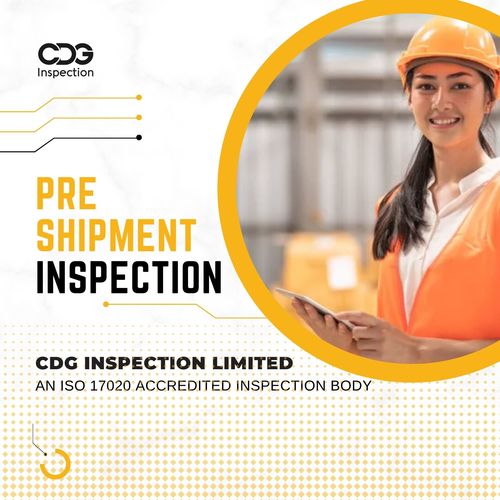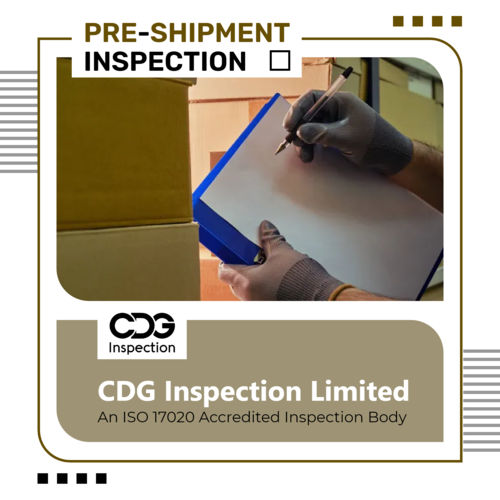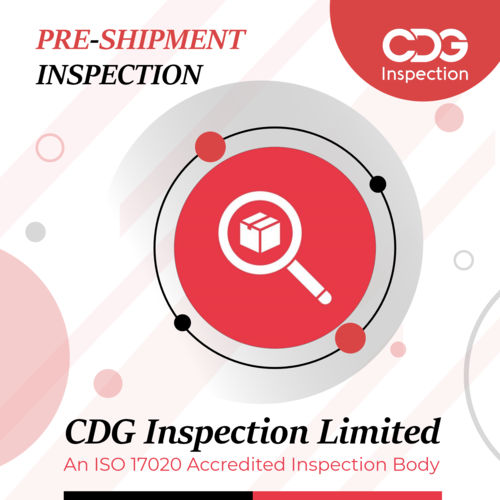Pre -Shipment inspection in Panchkula
Product Details:
X
Product Description
CIL Provides Accredited Pre-Shipment Inspection Services in Panchkula, Haryana, India. CIL is an ISO 17020 accredited inspection body.Here is a flow of what to expect before the inspection, Step 1 Inspector Travels to the Factory, The first step involves the inspector traveling to the factory where your goods are manufactured. They will have contacted the factory in advance to set a time and date and ensure that it will be ready for the inspection. Upon arrival, the inspector will usually meet with the sales manager in charge of your order before proceeding with the inspection. Step 2, Inspector Pulls the Sample (And sets aside items for special testing), After the preliminaries, the inspector is now ready to pull the samples to be inspected from your goods. They will most likely follow a statistical sampling procedure like the AQL Sampling method to determine the number of pieces to examine in each batch carton. During Inspection, Inspector measuring product during pre shipment inspection, To ensure a thorough pre shipment inspection, your inspector will be guided by an inspection checklist. This list tells them what to look out for during the inspection to ensure the quality of your products. With the inspection checklist in hand, they will then proceed to the third step. Step 3, Conduct Special Tests, Some products may require special testing to determine quality, depending on their functionality or unique attributes. For example, an electronic gadget might require an hour to charge fully, and the inspector needs to confirm its charging ability. In many cases, special tests can be time consuming, so the inspector may start with these first. Step 4, Check Packaging, Labelling, As mentioned, pre shipment inspection occurs when 100percent of your products have been manufactured and they are about 80percent packed. Unfortunately, even perfectly manufactured goods can arrive damaged due to insufficient packaging. Mis labelling can get you in trouble with the authorities in your country, resulting in costly delays. Therefore, your inspector must verify the packaging and labelling by confirming carton size, weight, markings, number of items in each carton, and sealing methods. They will also conduct a carton drop test and ensure barcodes are clear and legible. Step 5, Visual Inspection of the Product, The inspector will then visually inspect the selected samples for obvious defects such as missing screws or peeling paint. They will also be on the lookout for overall workmanship. Any defects found can be classified as minor, major, or critical based on the tolerance levels agreed upon beforehand. Step 6, Functional Testing, Functional testing involves practically using the product to confirm that it works as it should. For instance, if it is a dining table set, do the legs wobble or rock when you sit, or is it stable and firm, If it is an alarm clock, does it go off at the set time, If it is a garment, does the zipper work properly, Step 7, Check Physical Requirements, When you order a product from a factory in India, you will give them specifications for height, weight, length, and other criteria. One role of the product inspector is to ensure that the finished product meets these specifications. They may use tools such as tape measures and calipers to confirm the actual measurements.Tell us about your requirement

Price:
Quantity
Select Unit
- 50
- 100
- 200
- 250
- 500
- 1000+
Additional detail
Mobile number
Email








